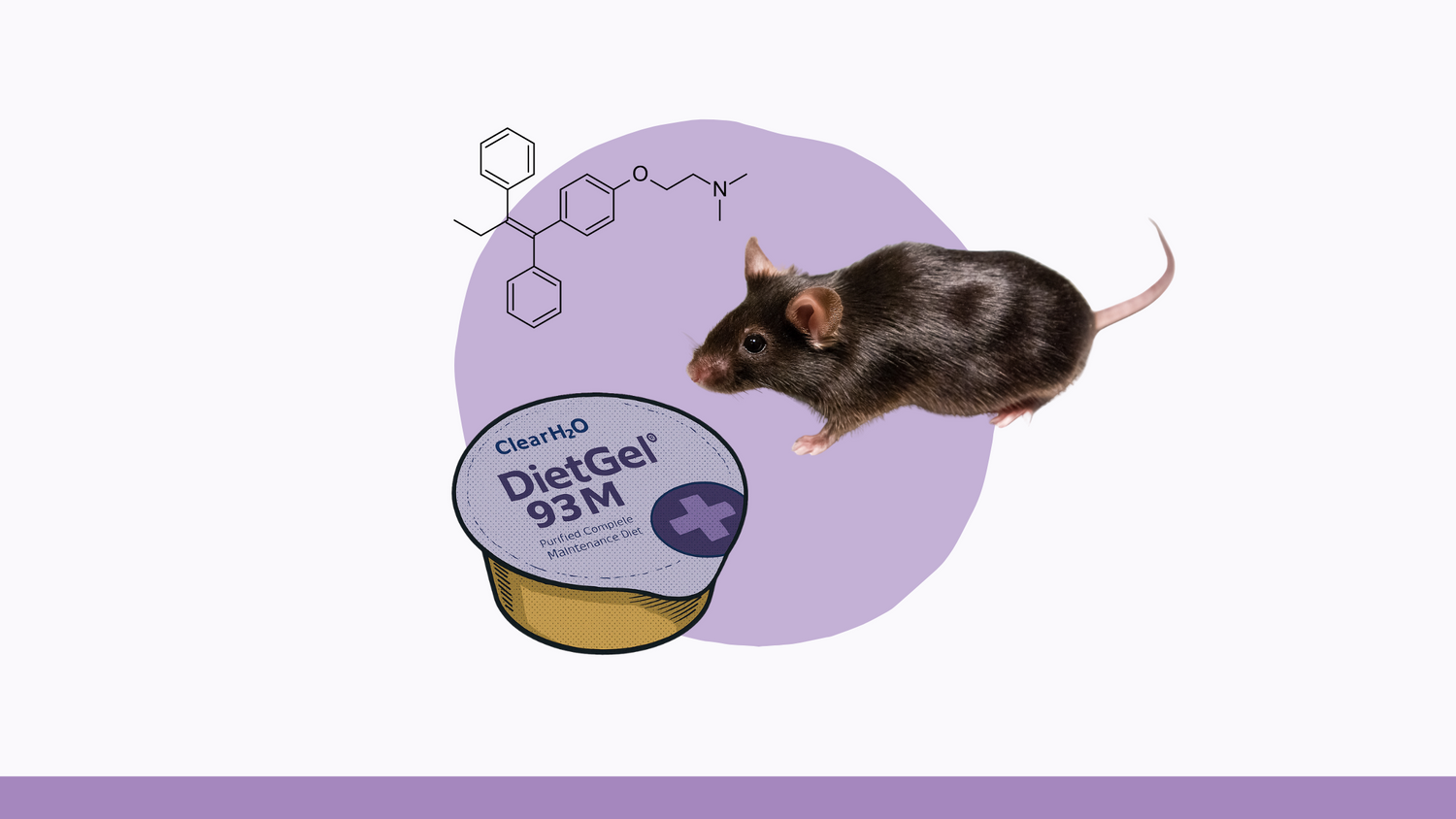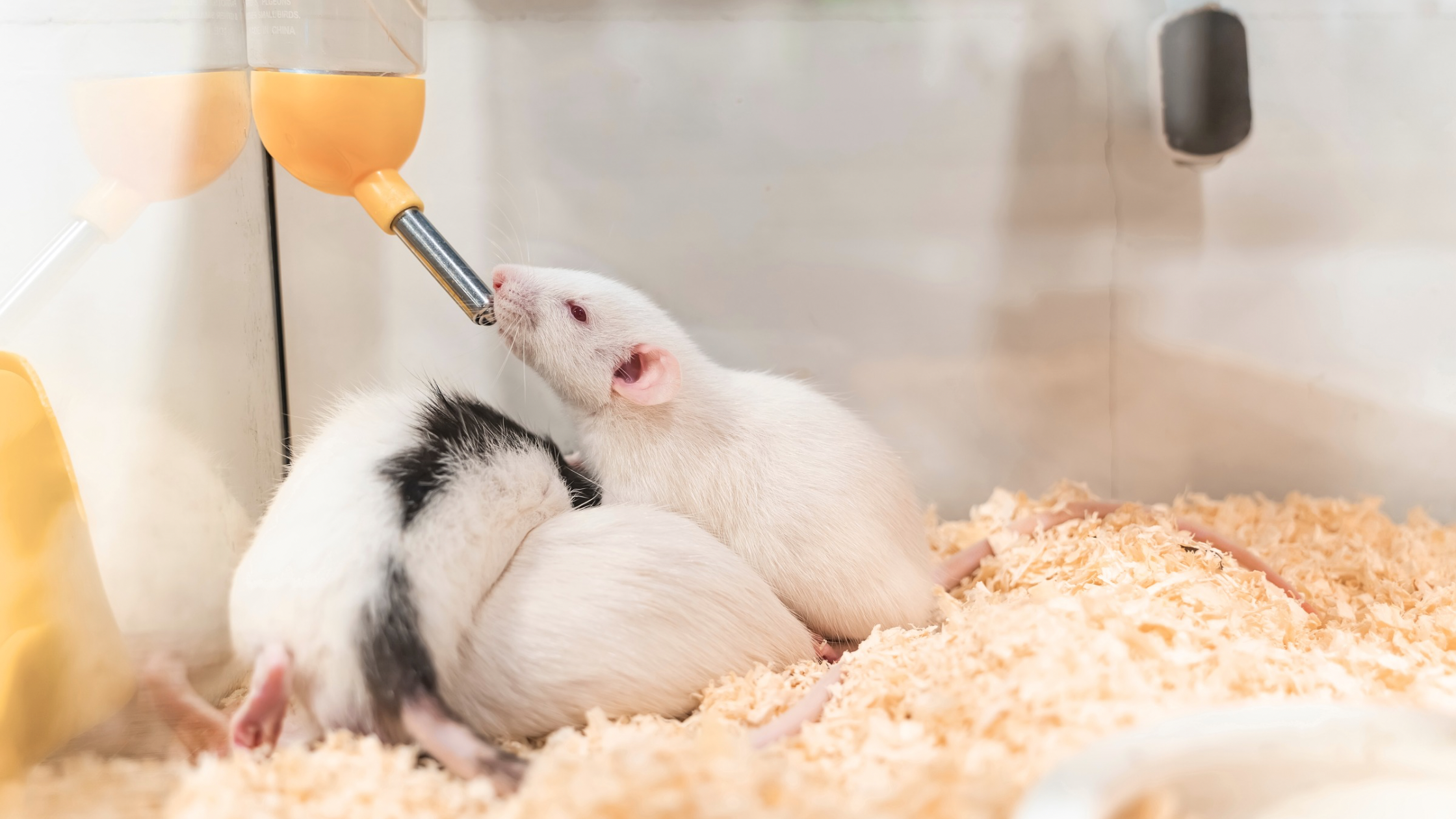Objective
This study by the Cayouette Laboratory at Montreal Clinical Research Institute evaluated DietGel 93M as a cost-effective alternative to commercial tamoxifen pellets for inducing recombination in the GlastCER mouse line. Researchers compared recombination efficiency and body weight outcomes between tamoxifen administered in DietGel® 93M and commercially available tamoxifen pellets (Inotiv Taklad Diets, cat# TD.130859).
Background
Tamoxifen pellets are commonly used for CreERT induction but are expensive and offer limited dosing flexibility. DietGel 93M offers an extended shelf life, ease of handling, and can be custom-dosed, potentially reducing induction costs while maintaining effectiveness.
Methods
Animal Model
The GlastCER mouse line was generated by crossing the GlastCER (Tg(Slc1a3-cre/ERT)1Nat/J, Jackson Laboratories, Stock 012586) with the RYFP reporter line (B6.129X1Gt(ROSA)26Sortm1(EYFP)Cos/J, Jackson Laboratories, Stock 006148). Cre recombinase is expressed in Müller glia under the Slc1a3 promoter and induced with tamoxifen at postnatal day 30.
Pilot Tolerability Test
Three C57/Bl6 mice were fed DietGel 93M exclusively for three weeks. Body weight was monitored to assess safety and palatability.
Tamoxifen Preparation and Dosing
- Tamoxifen was dissolved in corn oil (30 mg/mL).
- Each 2 oz DietGel 93M cup was mixed with 220 µL of this solution to achieve 660 µg tamoxifen per mouse per day.
- Cups were stored at -20˚C until use and replaced every 48 hours.
- A low-dose group received 165 µg per mouse per day.
Assessment of Recombination
After 21 days of dosing, mice were sacrificed and eyes collected. Retinal sections were processed and stained with antibodies for GFP, SOX2, and SOX9 to assess Cre recombination in Müller glia.
Results
Recombination was observed at both tamoxifen doses delivered via DietGel 93M (Figure A). Immunostaining confirmed that YFP+ cells co-expressed SOX2 and SOX9, indicating that recombination occurred specifically in Müller glia. As expected, the higher tamoxifen dose resulted in greater recombination efficiency. However, overall recombination was lower compared to that achieved with tamoxifen pellets. Throughout the study, mice experienced a modest initial weight loss, but by day 21, body weights had returned to baseline (Figure B).


Conclusion
DietGel 93M is a viable and economical vehicle for tamoxifen delivery in inducible Cre models. While recombination efficiency was lower than with pellets, it was sufficient and allowed for dosing flexibility and improved cost-efficiency. A 6.6 lb bag of irradiated tamoxifen pellets delivering 660 µg per mouse per day costs approximately $254 and expires in 4–6 months. In contrast, a 96-cup case of DietGel 93M costs $161, feeds 5 mice for 2 days per cup, and has a 24-month shelf life. DietGel 93M also allows researchers to easily adjust tamoxifen dosing based on the needs of specific mouse lines, offering both practical and economic advantages.

Acknowledgement: We would like to thank the Cayouette Laboratory team at Montreal Clinical Research Institute (IRCM).



Leave a comment
All comments are moderated before being published.
This site is protected by hCaptcha and the hCaptcha Privacy Policy and Terms of Service apply.